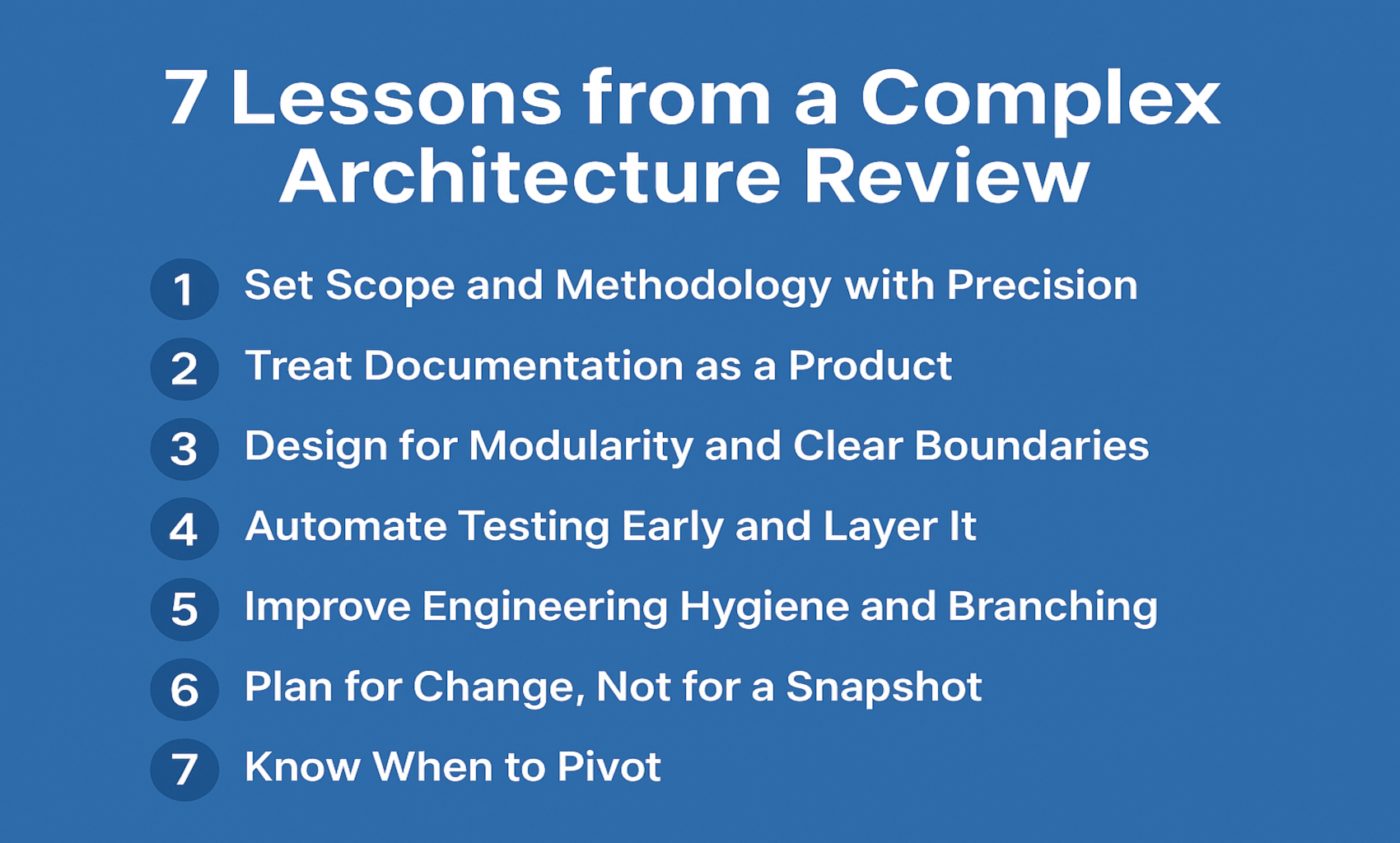7 Lessons from a Complex Architecture Review
Some time ago, I led a deep architecture review for a large-scale digital transformation program. The system was not yet live, and the delivery plan extended into 2028. The review focused on the top ten most complex user stories and aimed to answer two questions: Is the current architecture viable? Is the project plan feasible?
The findings revealed recurring patterns that are relevant to many transformation efforts. Here are seven key lessons.
1) Scope and Methodology Must Be Precise
The initial scope was ambiguous. It used umbrella terms like “CRM configuration” and “portal setup” without defining functional outcomes. Agile was the declared methodology, but there were no sprints, MVPs, or iterative delivery. All work packages sat on the critical path, creating bottlenecks.
Lesson: Define scope in terms of measurable capabilities. Use a visible agile cadence with sprint planning, demos, and retrospectives. Structure delivery so teams can work in parallel, not sequentially.
2) Documentation Is a Strategic Asset
Documentation was fragmented and incoherent. There was no high-level design, no integration map, and major gaps in technical detail. This slowed onboarding and decision-making.
Lesson: Create a single source of truth for architecture. Include diagrams, interface contracts, decision records, and traceability to code. Treat documentation as a living product.
3) Modular Architecture Enables Agility
The system was tightly coupled, with no clear boundaries between components. This made testing, scaling, and maintenance difficult. Composite user stories created dependencies that blocked progress.
Lesson: Define modular components with clear APIs and data models. Use domain-oriented repositories and contract tests to ensure components can evolve independently.
4) Testing Must Be Automated and Strategic
Testing was mostly manual. Unit test coverage was minimal, pipelines were broken, and deployments were manual. There was no automated regression testing, and test cases were missing or incomplete.
Lesson: Stand up continuous integration early. Automate regression testing and target staged coverage growth. Align branching strategies with sprint goals and link test cases to user stories.
5) Engineering Hygiene Matters
The codebase had hygiene issues: misleading method names, large classes, and no branching strategy aligned with features or sprints. Branches were created per task, not per deliverable.
Lesson: Refactor continuously. Use naming conventions and size limits. Adopt a branching model that supports delivery, such as trunk-based development with feature toggles or sprint-based release branches.
6) Plan for Change
Platform and business needs were expected to evolve by 2026, but the architecture did not account for this. Without adaptability, the system risked becoming obsolete before launch.
Lesson: Build adaptability into both architecture and planning. Use versioning, feature toggles, and quarterly checkpoints to reassess assumptions and pivot when needed.
7) Know When to Pivot
The review concluded that the current architecture and plan were not viable. A more radical restructuring could reduce the timeline by 20 to 40 percent, provided the right resources and discipline were applied.
Lesson: Do not hesitate to pivot when the current path is unsustainable. Run architecture and testing tracks in parallel. Front-load hard decisions and define clear success metrics for the transition.
Closing Thought
Architecture is not just about technology. It is a delivery system. When scope is clear, documentation is living, components are modular, and testing is automated, teams move faster with less risk. When those foundations are missing, the smartest move is to pivot early and rebuild the runway while there is still altitude.

Leave a Reply